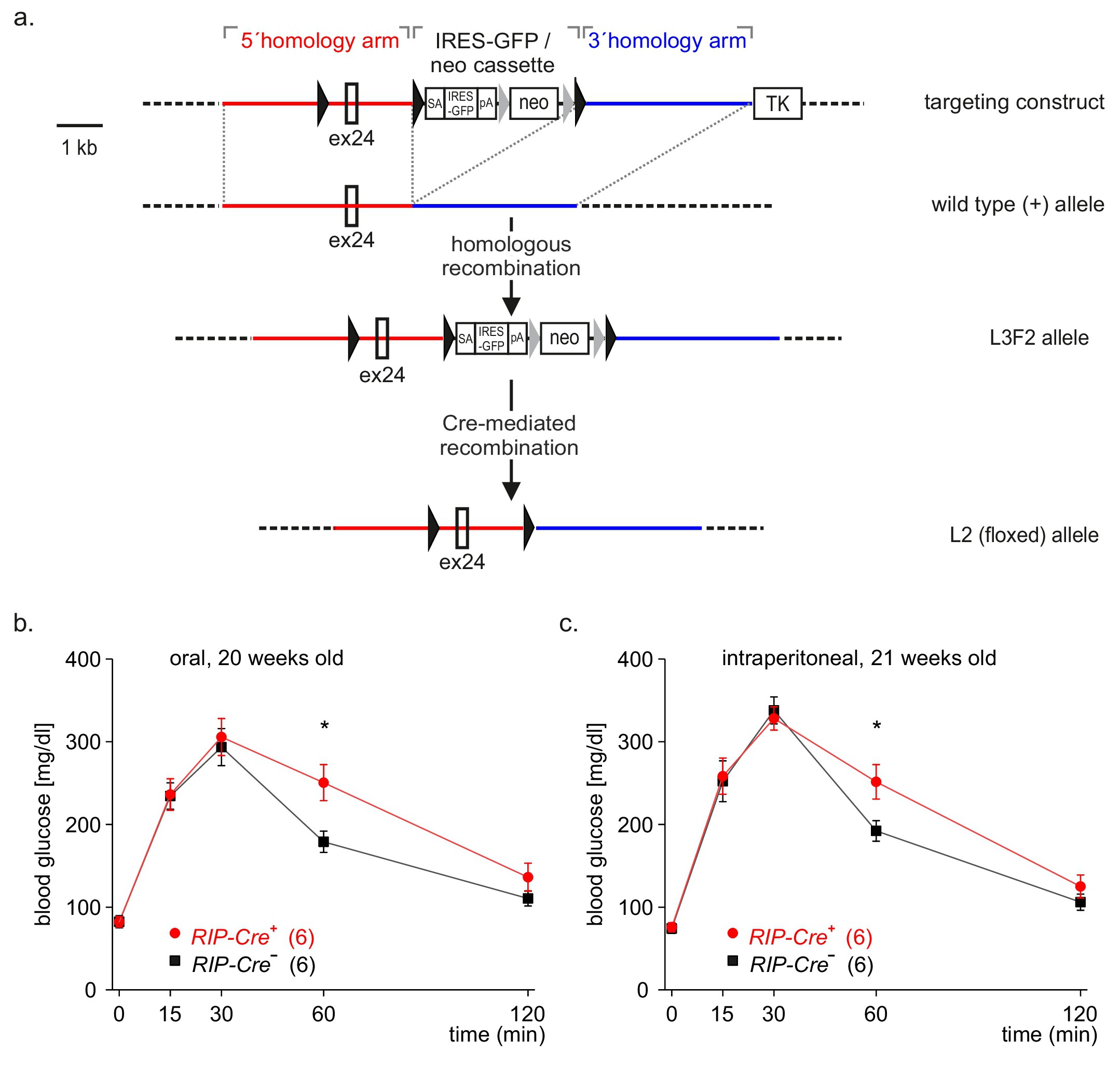Fig. 5. Impaired glucose clearance in TRPM3-deficient mice. (a) Targeted disruption of the mouse Trpm3 gene by the introduction of loxP sites flanking the pore coding exon 24 (ex 24). The targeting construct contained three loxP sites (filled black triangles), a 5´homology arm (including ex24), a splice acceptor site (SA), an internal ribosome entry site (IRES), the cDNA of the enhanced green fluorescent protein (GFP), a polyadenylation signal (PA), two flippase recognition targets (grey triangles), a neomycin resistance gene (neo), a 3´homology arm and a herpes simplex virus thymidine kinase cassette (TK). Homologous recombination with the wild-type (+) Trpm3 allele yielded a modified L3F2 allele and subsequent Cre-mediated recombination produced an L1 (-) allele lacking exon 24 (Trpm3 knockout) as described in [15] (not shown) as well as a fully functional L2 allele with loxP sites flanking exon 24 (floxed allele). (b, c) Glucose tolerance tests in Trpm3-/flox mice carrying a transgene encoding the Cre recombinase under the control of the rat insulin promoter (RIP-Cre+, red labels) and their littermates lacking this transgene (RIP-Cre-, black labels). Measurements were performed before (0 min) and 15, 30, 60, and 120 min after oral (b) or intraperitoneal (c) application of glucose in 20 or 21 weeks old mice, respectively. The numbers of individuals tested are indicated in brackets.
